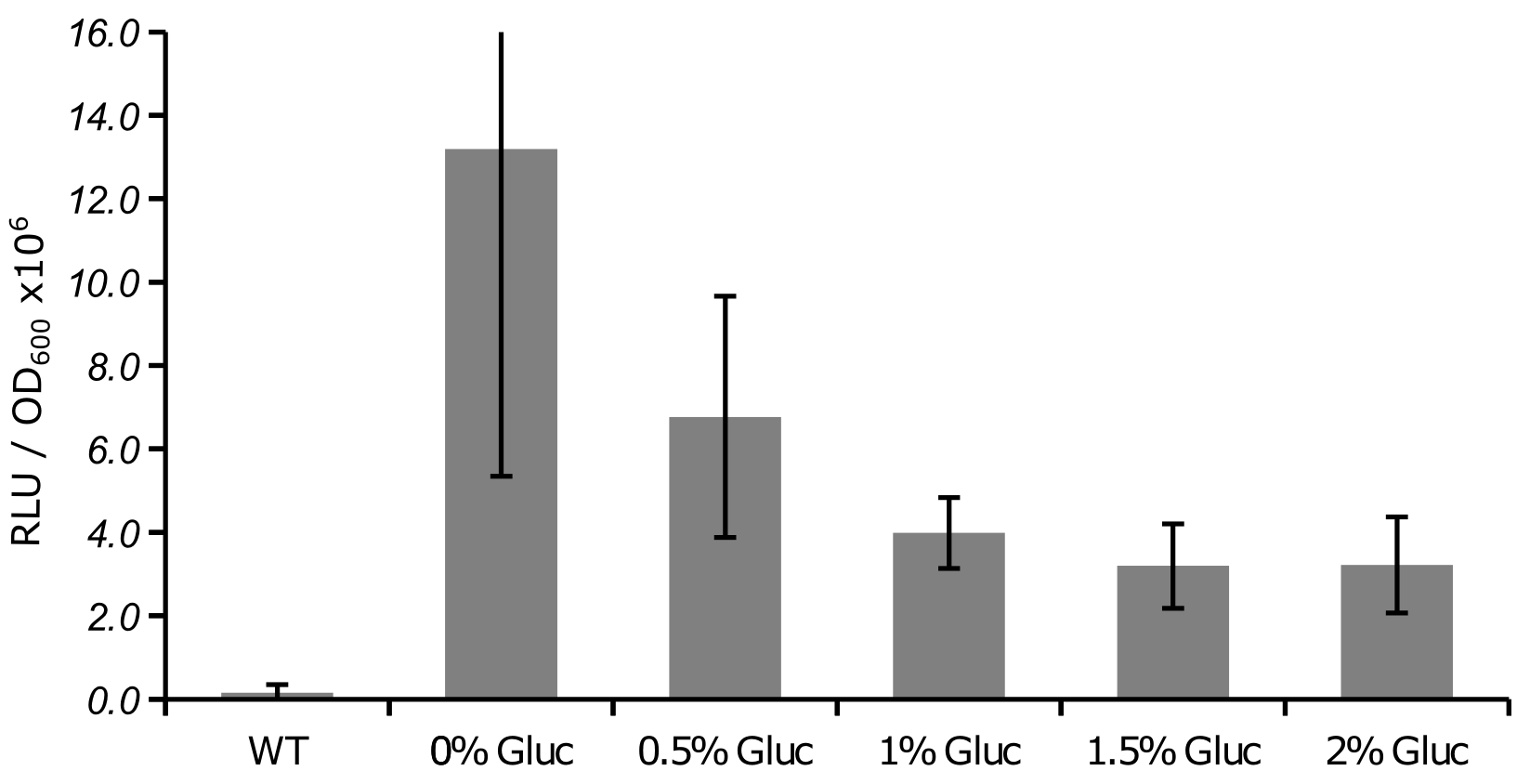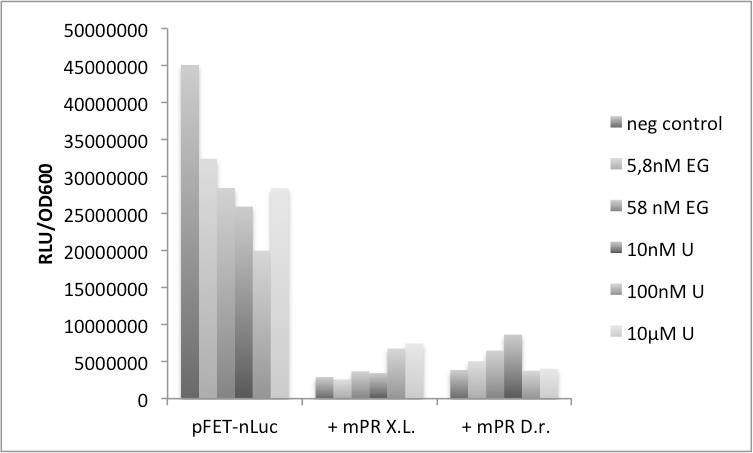Difference between revisions of "Part:BBa K1680009"
KatharinaS (Talk | contribs) |
|||
| Line 2: | Line 2: | ||
<partinfo>BBa_K1680009 short</partinfo> | <partinfo>BBa_K1680009 short</partinfo> | ||
| − | This part contains the protein coding region for the NanoLuc(tm) luciferase, which is originally designed by Promega Corporation (http://bit.ly/1Vgmab3, free for research use). We codon-optimized the part for yeast. The NanoLuc is smaller than other luciferases while yielding equal or stronger luminescence readings. | + | This part contains the protein coding region for the NanoLuc(tm) luciferase, which is originally designed by Promega Corporation (http://bit.ly/1Vgmab3, free for research use). |
| + | Nanoluciferase is a small and monomeric enzyme (19.1kDa) and is about 150 times brighter than other luciferases. The new substrate called furimazine produces a high intensity luminescence. After looking at the bibliography, Nanoluciferase gene was chosen because it allowed us to have a stronger signal. Indeed, this protein isn’t secreted but unfused. Furthermore, its intracellular half-life is superior to 6 hours and the Nanoluciferase has a low autoluminescence. This gives us maximum sensitivity. | ||
| + | NLuc is used in biomedical research for several applications, including studying protein-protein interactions, monitoring protein stability, BRET-based sensors, molecular imaging or investigating genetic regulation and cell signaling. | ||
| + | The emission pic of nanoluciferase is located at 460nm. | ||
| + | We codon-optimized the part for yeast. The NanoLuc is smaller than other luciferases while yielding equal or stronger luminescence readings. | ||
Revision as of 08:25, 8 October 2019
NanoLuc Luciferase
This part contains the protein coding region for the NanoLuc(tm) luciferase, which is originally designed by Promega Corporation (http://bit.ly/1Vgmab3, free for research use). Nanoluciferase is a small and monomeric enzyme (19.1kDa) and is about 150 times brighter than other luciferases. The new substrate called furimazine produces a high intensity luminescence. After looking at the bibliography, Nanoluciferase gene was chosen because it allowed us to have a stronger signal. Indeed, this protein isn’t secreted but unfused. Furthermore, its intracellular half-life is superior to 6 hours and the Nanoluciferase has a low autoluminescence. This gives us maximum sensitivity. NLuc is used in biomedical research for several applications, including studying protein-protein interactions, monitoring protein stability, BRET-based sensors, molecular imaging or investigating genetic regulation and cell signaling. The emission pic of nanoluciferase is located at 460nm. We codon-optimized the part for yeast. The NanoLuc is smaller than other luciferases while yielding equal or stronger luminescence readings.
RLU measurement of the NanoLuc under pSUC2 promoter part:BBa_K950003 control, normalized to OD600.
RLU measurement of the NanoLuc under pFET3 promoter part:BBa_K950000 control, normalized to OD600.
Sequence and Features
- 10COMPATIBLE WITH RFC[10]
- 12COMPATIBLE WITH RFC[12]
- 21COMPATIBLE WITH RFC[21]
- 23COMPATIBLE WITH RFC[23]
- 25COMPATIBLE WITH RFC[25]
- 1000COMPATIBLE WITH RFC[1000]


